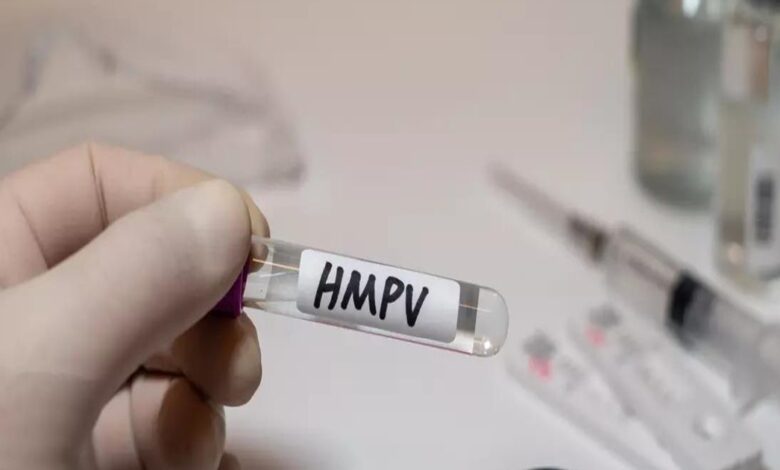hmpv in china video: Viral video showing HMPV chaos at China hospital raises alarm. Is human metapneumovirus a new virus?

Read also: HMPV cases are rising worldwide: symptoms, treatment, diagnosis and everything else you should know
How is the HMPV outbreak in China?
In light of the fact that cases of some respiratory diseases are expected to increase during the winter, China’s disease control authority had earlier announced on December 27 that it was testing a surveillance system for pneumonia of “unknown origin.” According to an official statement, Reuters reported that data on acute respiratory disorders revealed an increase in the total number of infections for the week from December 16 to 22.
A video is circulating on social media showing hospitals in China being overwhelmed amid a severe outbreak of influenza, including influenza A and HMPV, resembling the 2020 Covid wave.
The official, Kan Biao, said in a press conference that China is likely to be infected with a number of respiratory diseases in the winter and spring, according to Reuters. Although he did not elaborate, he noted that there are expected to be fewer cases overall this year than last year. Beijing responded to these concerns with a press release. As Mao Ning, a spokesman for the Chinese Foreign Ministry, said, “Respiratory infections tend to peak during the winter” on Friday.
What is HMPV and is it a new virus?
Discovered in 2001, HMPV is a common respiratory virus that causes upper and lower respiratory tract illnesses (such as the common cold). As with respiratory syncytial virus (RSV) and other seasonal diseases, it often appears in winter and early spring.
No, HMPV is not a new virus. According to the US Centers for Disease Control and Prevention (CDC), it was initially identified in 2001. But according to one expert, there is some serological evidence that the virus has been around since at least 1958. From the Pneumoviridae family, according to TOI.
Read also: HMPV cases rise in Malaysia after outbreak in China; The government issues advice
What are the symptoms of HMPV?
Human metapneumovirus (HMPV) is a respiratory virus that usually causes mild to moderate flu-like symptoms. The virus spreads most during the winter and early spring months and is transmitted primarily through direct contact with infected individuals or contaminated surfaces.
Common symptoms include cough, fever, sore throat, runny or stuffy nose, and in some cases, wheezing or shortness of breath. Some individuals, especially the very young, the elderly, or those with a weakened immune system, may develop more serious respiratory conditions such as pneumonia or bronchiolitis.
Furthermore, other clinical symptoms associated with the infection can worsen and lead to problems such as pneumonia or bronchitis. Because the disease typically takes three to six days to incubate, people may begin to develop symptoms within this time range after exposure. Depending on how severe the infection is, the length of the illness can change.
China intensifies surveillance amid the new virus outbreak
Amid the HMPV outbreak, health authorities in China are implementing new measures to monitor and manage the spread of pneumonia cases of unknown origin. However, Beijing has downplayed these developments as an annual winter event.
The virus is not new but has gained attention amid a surge in cases, especially among children under 14 in northern China. The spike in cases coincides with cold weather and increased indoor activity, conditions that typically fuel the spread of respiratory viruses. Health officials confirm that this increase is consistent with seasonal trends, according to The Independent.
Read also: HMPV in China: Is human metapneumovirus similar to COVID-19? What you need to know
A pilot program has been launched to track pneumonia of unknown origin, ensuring that laboratories and health agencies report and manage cases more effectively, state broadcaster CCTV reported, citing an administration official at a press conference.
Can HMPV spread to other countries?
Hong Kong has reported a few cases of HMPV. Neighboring countries such as Cambodia and Taiwan are closely monitoring the situation. Cambodia’s Department of Infectious Disease Control has issued warnings about HMPV, citing its similarities to COVID-19 and influenza.
The Taiwan Centers for Disease Control said the risks of the virus are greater for children, the elderly and immunocompromised individuals.
Should India be worried?
The Indian Council of Medical Research (ICMR) has confirmed two cases of Human Metapneumovirus (HMPV) in Karnataka through routine surveillance. Both cases were detected at Bengaluru Baptist Hospital, as part of ICMR’s ongoing surveillance of the respiratory disease across the country. The third case of HMPV in India has been reported in Gujarat.
The first case involved a 3-month-old female infant who was diagnosed with HMPV after admission to hospital with bronchopneumonia. The second case is an 8-month-old child who tested positive on January 3, 2025, and also has a history of bronchopneumonia. The baby is now recovering. None of the patients had any international travel history.
Dr Atul Goel, representative of the Directorate General of Health Services (DGHS), advised the public not to panic over the outbreak of Human Metapneumovirus (HMPV) in China. According to official sources, the National Center for Disease Control of the Federal Ministry of Health is closely monitoring cases of respiratory and seasonal influenza in the country and is communicating with foreign organizations, ANI reported.
The difference between HMPV and Covid-19?
Like any other respiratory virus that causes the common cold, coronavirus can cause flu-like symptoms in young people and adults alike. According to a study by Science Direct, COVID-19 appears to be seasonal and temperature sensitive.
Read also: Is China facing another epidemic? Five years after Covid, the threat of HMPV is sparking panic. What do you need to know?
According to the US Centers for Disease Control and Prevention, HMPV also circulates in different seasons of the year. While HMPV can be found year-round, infections in the United States usually peak between late winter and early spring.
To date, there is no vaccine against HMPV and antiviral treatment is not recommended. However, patients can take the following actions to help stop the transmission of respiratory viruses, including HMPV:
Hands should be washed often for at least 20 seconds with soap and water (see CDC Clean Hands Save Lives!).
Refrain from using unwashed hands to touch the mouth, nose or eyes.
Avoid intimate contact with sick people.
When coughing or sneezing, patients with cold-like symptoms should cover their mouth and nose.
Do not share eating utensils or glasses with other people.
China’s neighbors are watching this issue closely. The World Health Organization has not yet issued a statement regarding the outbreak of the virus in China, and neither Beijing nor the World Health Organization has declared a state of emergency.




